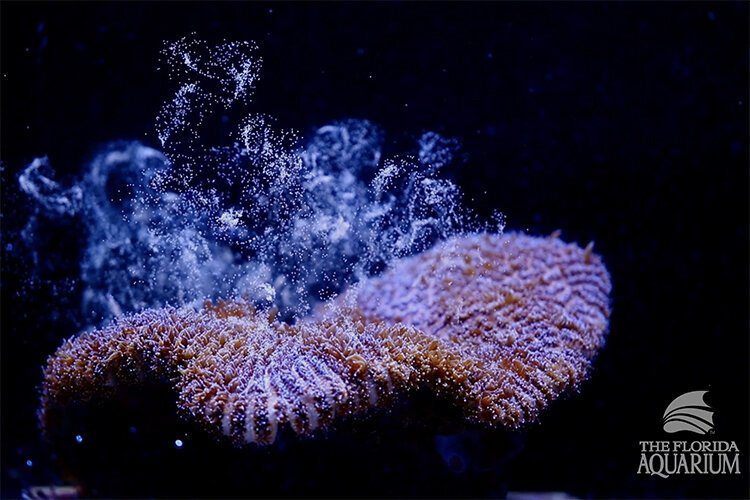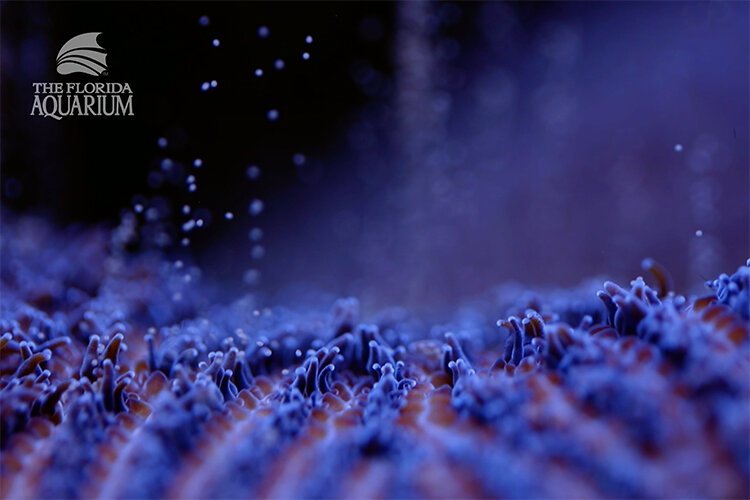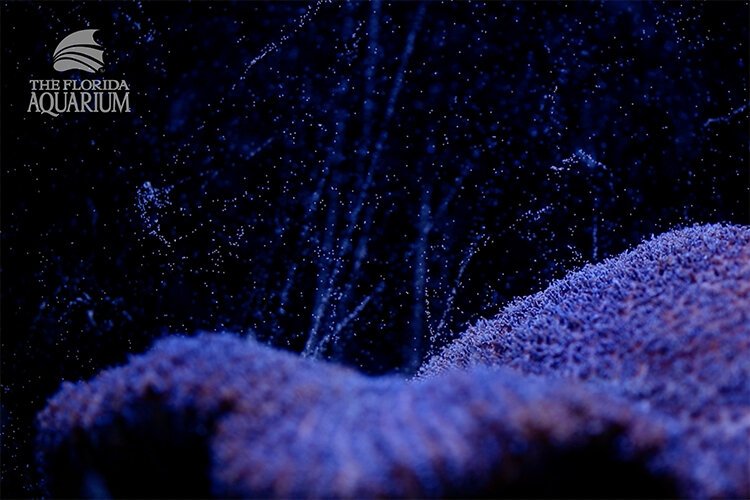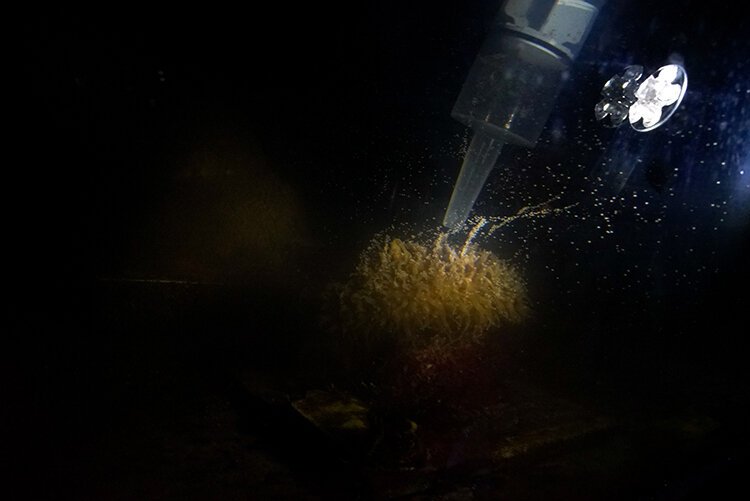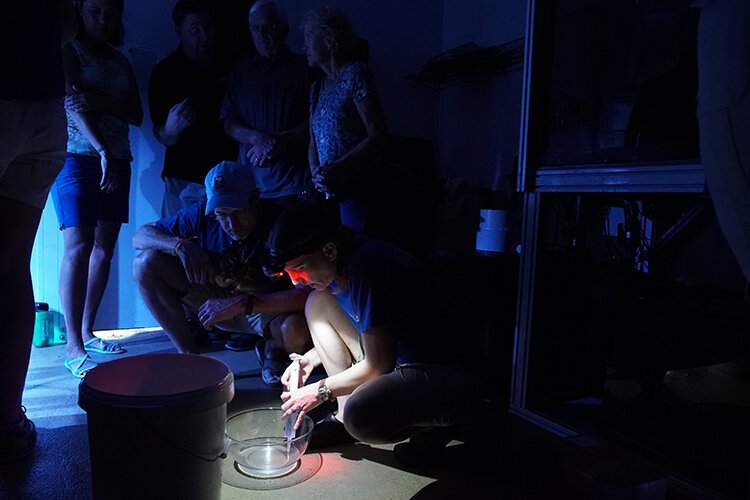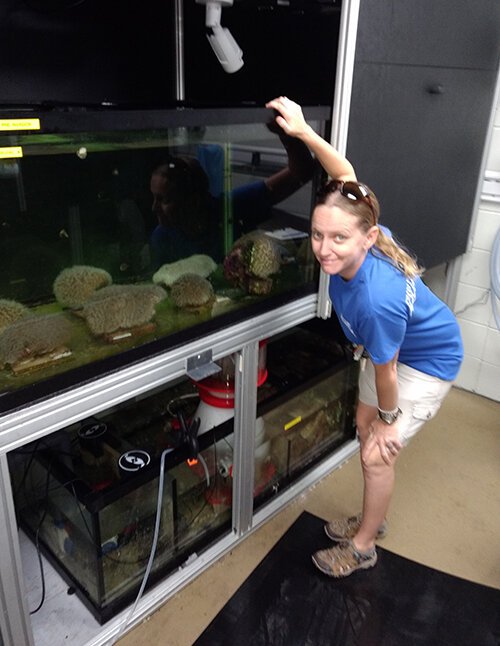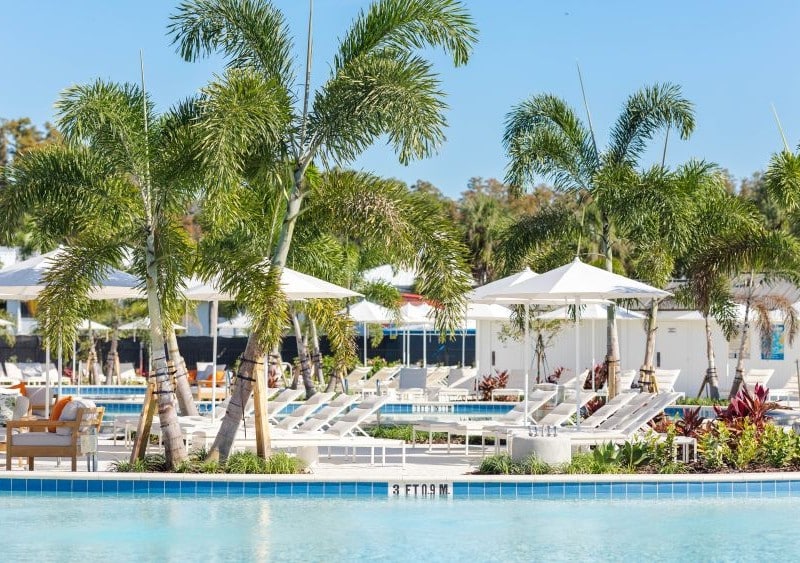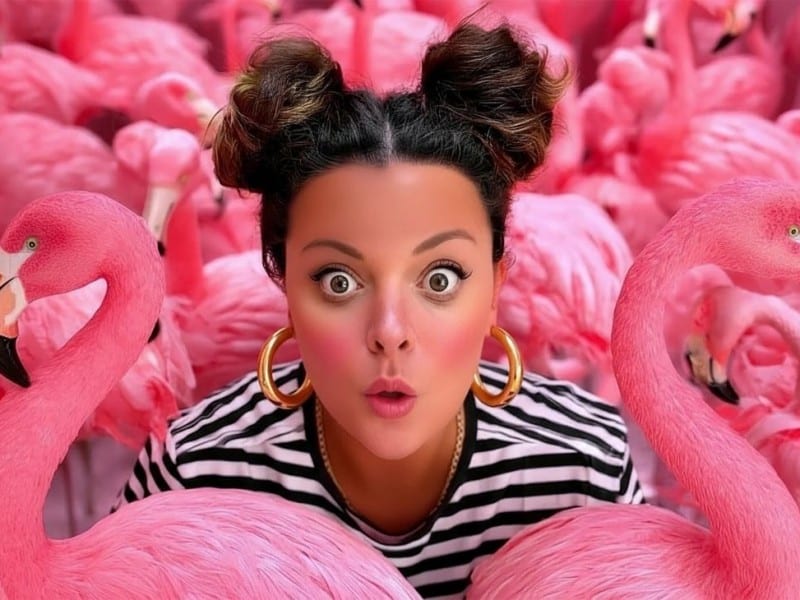Florida Aquarium scientists in Tampa, Apollo Beach fight to save endangered coral reefs
Efforts to revive coral reefs are in their infancy compared to the decades of work spent trying to prevent terrestrial extinctions. But a major step was taken recently at The Florida Aquarium in Tampa: the first artificially induced spawning of an Atlantic coral species.
For divers, it’s a rare and almost unearthly sight.
One night a year, usually just after a full moon, the coral reef they skim over during the day erupts with a sort of upside-down snowstorm, but in colors, yellow, peach, and brown as well as white.
The coral is spawning, and what looks in the daytime like a garden of colorful rocks and stony trees and flowers is revealing what it actually is — a colony of millions of tiny animals.
It’s how the reefs propagate, becoming “the rain forests of the ocean” for the diversity of life they support.
But like much marine life, reefs are in serious trouble worldwide. Polluted water, climate change, diseases, and abusive fishing have reduced them to a fraction of what they should be.
That includes the Florida barrier reef, which most Floridians don’t realize is a planetary landmark like the Everglades. Extending the length of the Keys, it’s the world’s third-largest barrier reef after those in Australia and the Philippines, and the only one in North America.
Efforts to revive coral reefs are in their infancy compared to the decades of work to prevent terrestrial extinctions.
But a major step was taken recently at Tampa’s Florida Aquarium: the first artificially induced spawning of an Atlantic coral species.
It’s Atlantic pillar coral, which forms clumps of spiky pillars a few inches to a few feet tall, once a common sight on the Florida reef.
Today, healthy patches are so rare and far apart that their natural spawning has become nearly ineffective. They’ve been decimated by a new disease of unknown origin called stony coral tissue loss disease, possibly the worst of numerous coral diseases tracked in recent years.
Using techniques pioneered with Pacific coral species at an aquarium in London, a team at the Florida Aquarium used artificial lighting to fool pillar corals into thinking it was time to spawn.
The result: thousands of fertilized eggs which have now become tiny, barely visible colonies growing in tanks at the Aquarium, eventually to mature into coral polyps — and possibly to go back to the sea.
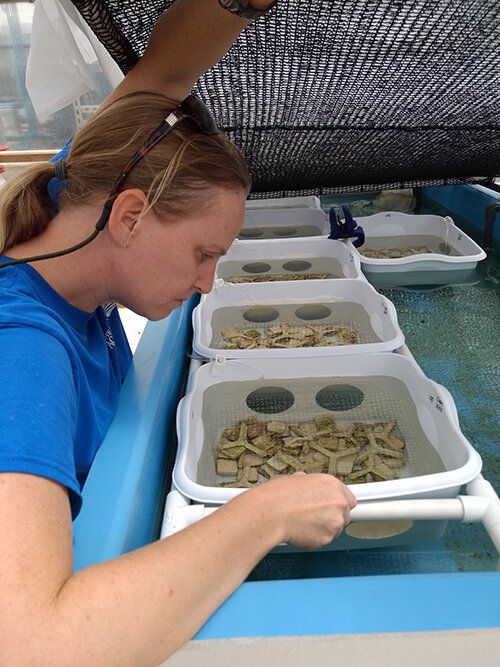
“This is the first step to being able to replant a reef with genetically diverse corals,” says Keri O’Neil, the senior coral scientist who led the Aquarium’s effort.
“This will allow us to have a managed breeding program similar to what you would do with terrestrial endangered species. You can look at things like crossing disease-resistant genotypes or mixing corals from different areas. It opens the door to being able to make genetically resilient corals.”
“At the macro level,” says Aquarium CEO Roger Germann, “our goal is to restore coral around the globe based on science and technology we can learn.
“But our specific focus … is to restore America’s great barrier reef.”
That’s not really its name — it doesn’t actually have a name, and that may be part of the problem.
“Unless we come up with a brand … why would a donor or a family of four in Des Moines care about saving that reef?” he says. Otherwise, “the resources go to the Great Barrier Reef in Australia, or to Belize.”
Noting the Keys’ annual $8 billion economic impact, much of it from tourism including fishing, he says, “If there’s no coral, there’s no tarpon.”
Most corals including the pillar coral are hermaphroditic, releasing both eggs and sperm in an annual spawning that may last for one or two nights, an hour or so each night.
Different species spawn at different times of the year. In nature, the billions of gametes they release float to the surface, mingle and cross-fertilize.
The fertilized eggs, about 1/100th of an inch across, are an ideal food for the many tiny mouths floating over the reef. Possibly one in millions will survive, drift to the bottom, and find a suitable surface to adhere and grow into a polyp.
It takes calcium from the water to make a shell and takes in symbiotic algae whose byproducts are food for the polyp, and which gives the coral its color.
As a reef, it can sink big ships, but as a living creature, coral is very delicate.
Diseases, including coral bleaching, can cause the coral to expel its algae, leaving it nutrient-deprived.
Acidic, too-warm water caused by the excessive carbon dioxide absorbed from fossil fuel burning in the air makes it hard to create a shell.
The algae need light and therefore clear water, not clouded by urban runoff and septic waste.
If the coral is healthy, the shapes of its colonies and the porous structures they haphazardly build provide something juvenile fish and creatures at the base of the sea’s food chain need – hiding places. Bare ocean bottoms are deserts by comparison to the swarming life around a healthy reef, including the entire food chain up to the sharks, barracudas, groupers, and tarpon who come in to hunt.
The structures also dissipate wave energy, protecting the shoreline from storm surge.
If the coral dies, the structures deteriorate as destructive organisms move in, eliminating the wave dissipation and living space.
Diving for solutions
To many divers, Florida’s reef looks like it’s dying.
To O’Neil, who’s watched it for years, its decline is depressing, including her favorite Florida dive site, Looe Key.
Her career really began when she went snorkeling off Fort Lauderdale as a child.
“There was a little bit of fear, being a kid,” she says. “I was like, what if there was a shark?
“But that was quickly overcome by the wonder of everything I was seeing. It’s just this overwhelming diversity of life. I wanted to know what everything was and what its purpose was and how it all fits together.”
“Now I’m studying the decline of that ecosystem, which is disheartening,” she says.
But she has recently done restoration work on the same reef she snorkeled as a child.
“Part of what keeps me going is wanting more children to be able to wonder at the beauty of this coral like I did.”
As O’Neil explains, coral can be replanted in the wild simply by breaking one piece into many small pieces – they will grow where they’re planted. The Aquarium and others have done that for years.
But the result is a colony of clones, all vulnerable to the same diseases or environmental problems.
Collecting wild spawn is extremely difficult. Divers must work at night in unpredictable conditions to collect organisms that can barely be seen in daylight.
“Captive breeding” could solve those problems, providing a steady stream of young, genetically diverse coral colonies to implant where conditions are favorable.
It’s common to see new coral diseases pop up and last a year or so, perhaps fading as corals acquire resistance, O’Neil says, but the tissue loss disease has now lasted five years.
In places, however, it’s beginning to decline, raising hopes for replantation, she says.
In addition, says Germann, the project could lead to “arking” — preserving species for a time in the future when environmental destruction is less rampant.
A global connection
The Aquarium is collaborating with the Horniman Museum Aquarium in London, which first induced Pacific corals — to spawn on an artificial cycle in 2013.
O’Neil works at the Aquarium’s Center for Conservation in Apollo Beach, a collection of greenhouse-like buildings housing tanks, pumps, and filters on land provided by TECO.

With about a $25 million annual budget, the Aquarium has spent about $4 million over five years, or 3-4 percent of its budget, on its conservation projects, focusing on sea turtles and sharks in addition to the biggest, coral, Germann says.
Most of that money comes from Aquarium ticket sales and donations, but the state Fish and Wildlife Conservation Commission also provides grants.
Germann acknowledges that’s not much money, particularly compared to the hundreds of millions being spent to revive the Everglades.
“That money is fantastic and needed, and we are tied to the success (of the Everglades),” he says, “but it would be great to see more funding at a significant level come to restoring coral.”
To work seriously toward saving the reef, he says, “You’ve got to build out the Center for Conservation tenfold. We need way more staff, way more greenhouses.”
Like others, Germann found the state of Florida’s reef “disheartening” on a recent snorkeling trip to the Keys.
But then he heard a tourist family on a nearby boat exclaiming over seeing reef fish.
“It re-energizes you,” he says. “We’re going to keep fighting the good fight.”

